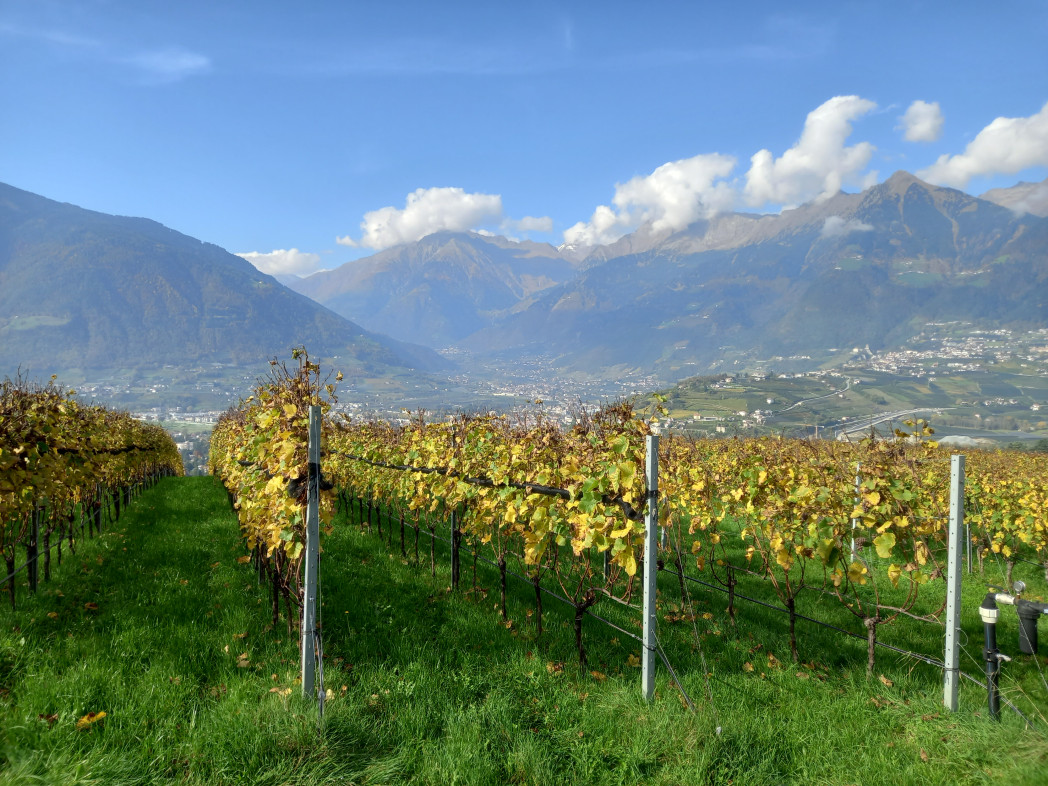Unravelling the Secrets of Cover Crops
Von Giulia Maria Marchetti

Torben Callesen, PhD student at our Faculty of Agricultural, Environmental and Food Sciences, recently received the “Best Oral Flash Presentation” award for his talk entitled “Short-term effect of cover crop sowing method on CO₂ exchange of vineyard alleys” at the workshop “Le ricerche dei dottorandi” (PhD students' research), organised by the Viticulture Working Group of SOI (Italian Society for Horticultural Science) at the University of Milan. In his presentation, he shared the results of a preliminary study on cover crops, carried out under the coordination of Massimo Tagliavini, Professor of Physiology and Ecology of Tree Ecosystem at our University, in collaboration with Professor Damiano Zanotelli from unibz and the Viticulture Group at the Laimburg Research Centre.
Cover crops are grasses and plants that grow between the rows of vines. They are generally cultivated to benefit the soil and ecosystem, rather than for harvest. But are the common practices behind the cultivation of these crops truly the best for the environment? A preliminary study from our Faculty of Agricultural, Environmental and Food Sciences sheds light on some critical aspects and proposes an alternative method to further improve their environmental impact.
At first glance, cover crops may seem like spontaneous grasses and plants randomly growing among the vines in a vineyard. What many people don’t know is that these crops play a fundamental role in both environmental health and viticulture. They are essential for improving soil health and fertility, controlling pests and weeds, managing water and supporting biodiversity and pollinators. Their role is even more crucial in mountain viticulture, such as that found in some areas of South Tyrol, where their roots help stabilise the soil and prevent erosion.
In the last decades, the cultivation of these grasses and annual species – such as rye, clover, hairy vetch and legumes – has become a key component of organic and sustainable viticulture. This is also due to their ability to promote carbon sequestration, the process of ultimately storing carbon in the soil. Cover crops contribute to carbon sequestration through various processes: fixing CO2 via photosynthesis, nourishing soil microbes and enhancing the stability of soil aggregates, where carbon compounds are physically stored.
Despite these advantages, a drawback arises not from the crops themselves, but from the traditional methods used to plant them. Typically, the soil is tilled prior to sowing in autumn, a practice that causes a dramatic release of carbon from the soil into the atmosphere as CO2 due to oxidation and may leave the soil bare over winter, thus negatively impacting the carbon footprint of the process.
To address this issue, Torben Callesen and a team of researchers coordinated by Professor Massimo Tagliavini tested alternative cultivation methods. They compared three different approaches in the alleys between vine rows: leaving the spontaneous vegetation (no cover crops), sowing cover crops with traditional tillage and sowing them directly into the ground without tilling. Their findings showed that the last method – sowing without tillage – resulted in significantly lower carbon emissions, maintaining levels similar to those observed with spontaneous vegetation, since soil disturbance was minimal and existing vegetation was left intact.
This preliminary study shows that this method can retain the benefits of cover crops while avoiding the environmental cost of soil tillage, offering a practical tool to support sustainable viticulture.
Related people: Torben Oliver Callesen, Massimo Tagliavini, Damiano Zanotelli